Having had a very nice raised bed built last year it was finally time to get the lead out and get planting. If it wasn’t done now, we’d miss the planting season and the raised bed wouldn’t be put to good use for another year.
Unfortunately the bed needed a bit of work first – weeding! Once weeded I gave the soil a thorough forking to get it ready for plenty of manure and compost to be added.
320 ltr. of compost and 180 ltr. of manure later:
I kept a small portion of the bed free from manure, only adding in compost, so that carrots and parsnips can enjoy a comfortable lie in. They apparently don’t like manure. Again the manure and compost were well forked in to the existing soil and hoed as well. Oh yeah, my arms hurt now.
Once the soil had been prepared the little boss, for whose benefit I’m primarily doing this arrived home and asked ” did you plant spuds?”. Well luckily no, I’d held off on the spud planting until she’d come home as it turns out that she’s a budding hobby gardener regularly proclaiming “I want to go planting” since Judy helped her plant some flowers in another bed.
Spuds were to be planted in part of the bed as they will dig the soil for me, even though I’ve dug it quite well enough already. 10 cm deep rills were dug with Eve’s help and the spuds were duly planted.
3 varieties planted
Carrots and Parsnips planted in their manure free region.
Tomorrow I’ll finish off the bed by planting lettuce, garlic, courgettes and onions. If I can fit them all in! I have of course a few books on small holding and gardener’s idles etc. etc. so I shouldn’t go too wrong hopefully. Next stop – I’ve some large pots which are going to become our herb garden and I want to plant Sweet Potatoes as Eve is partial to them.
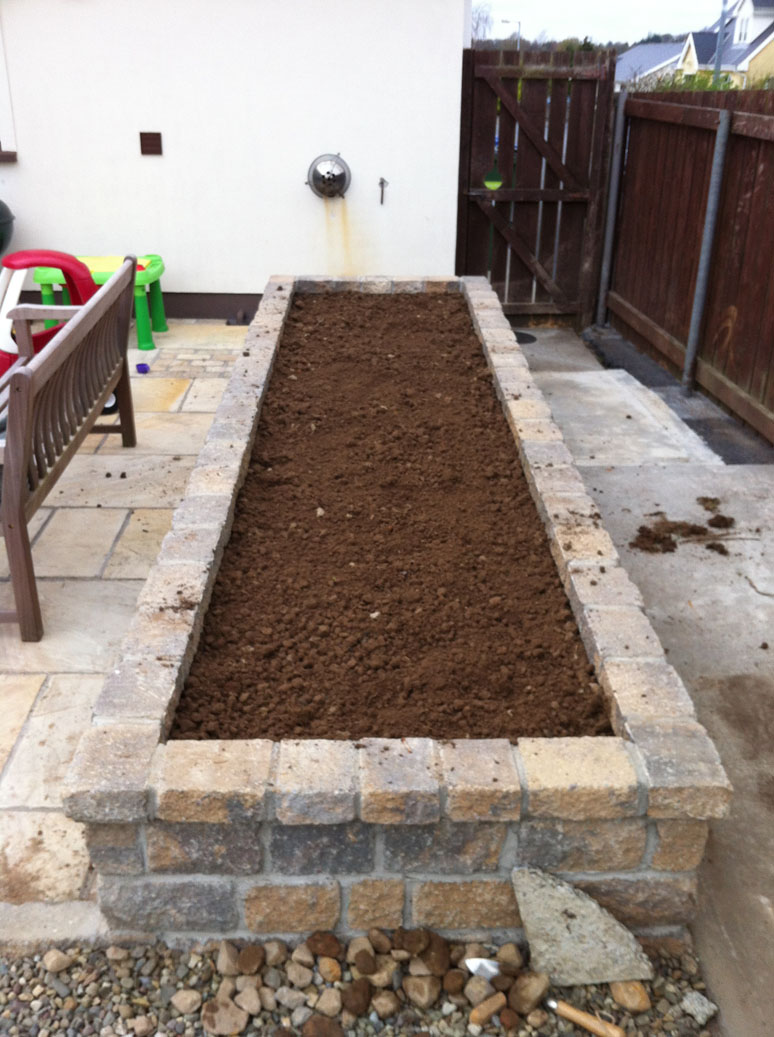
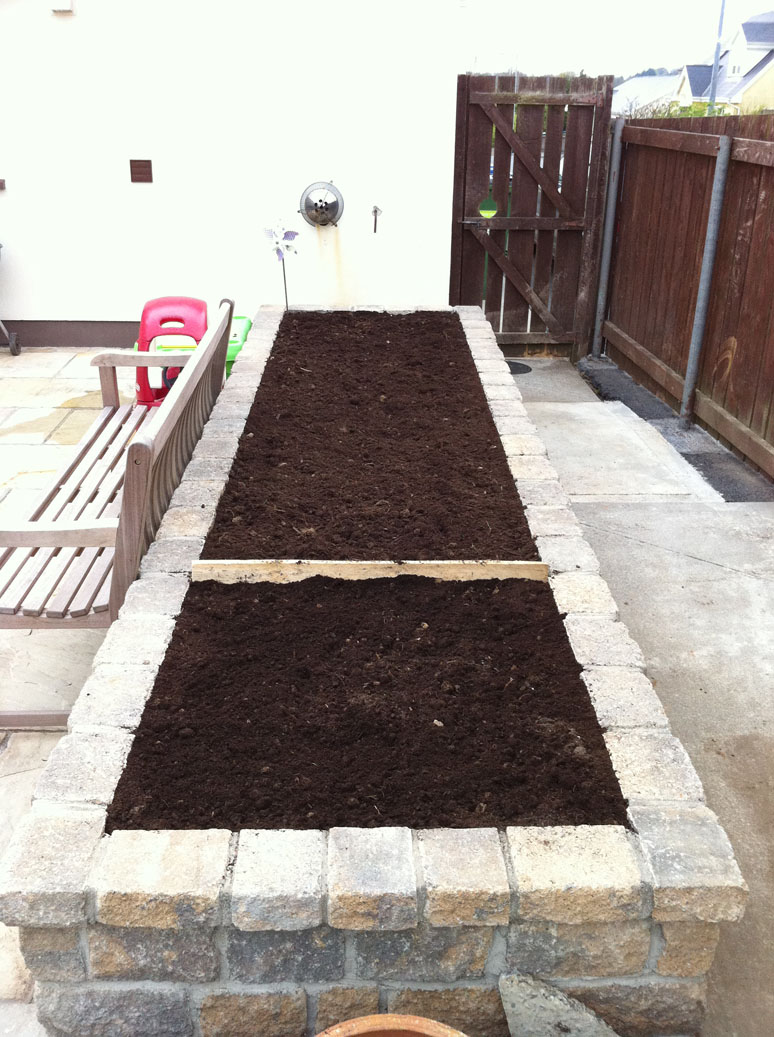
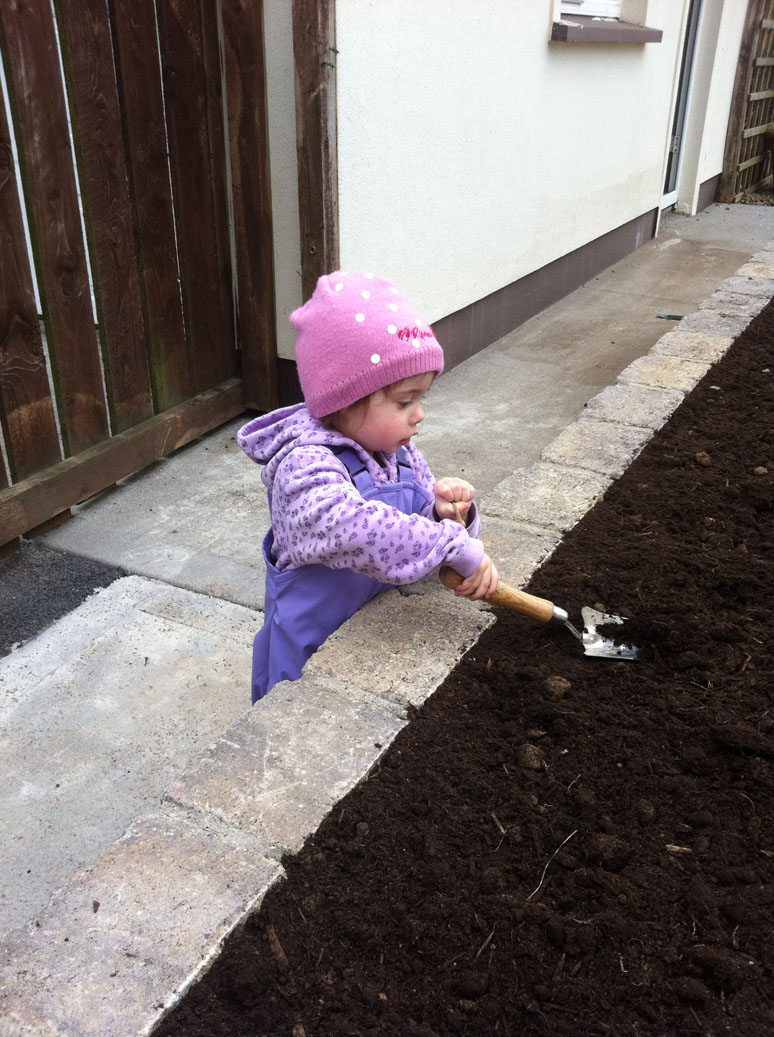
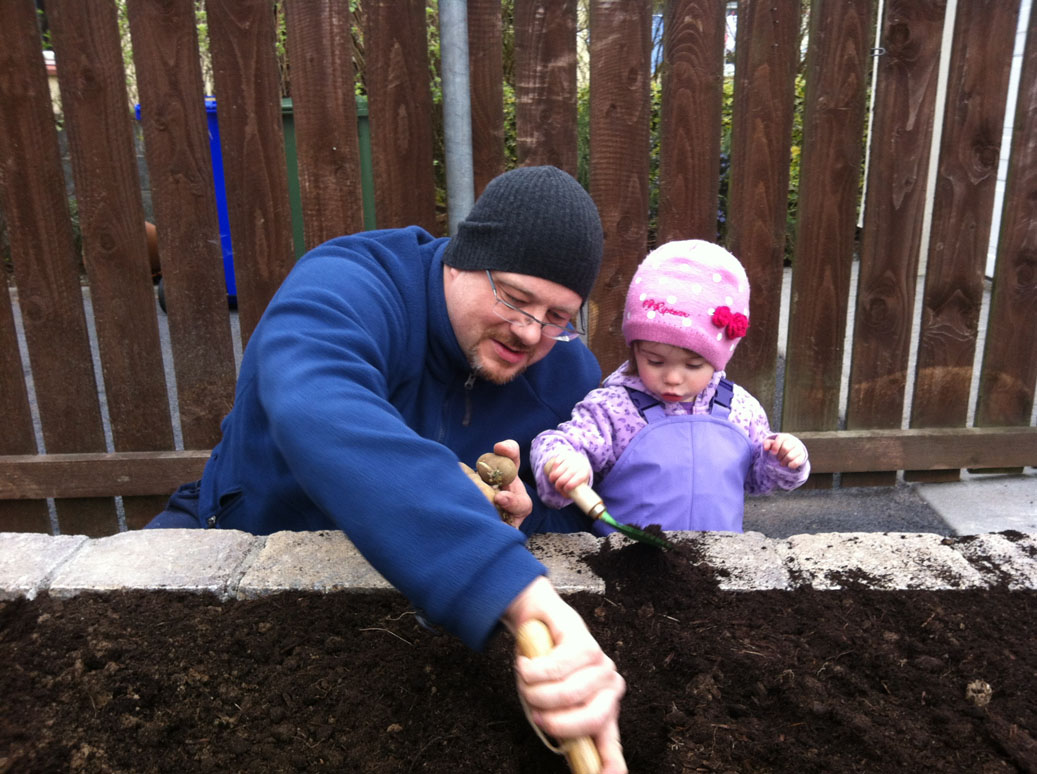
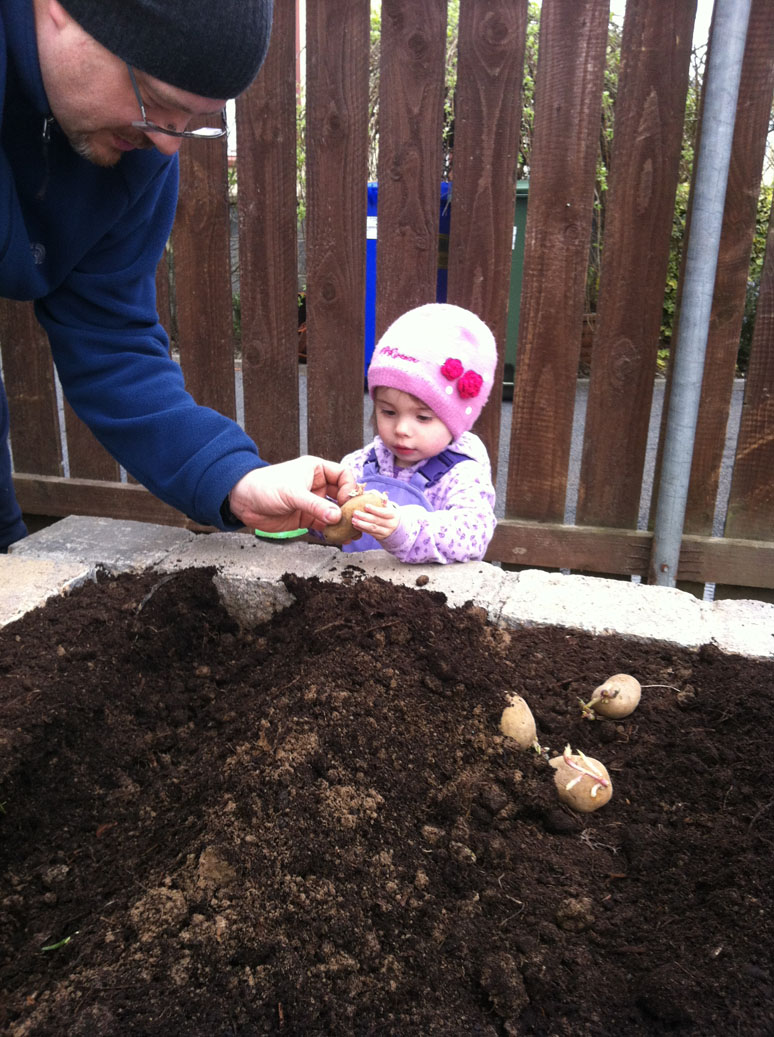
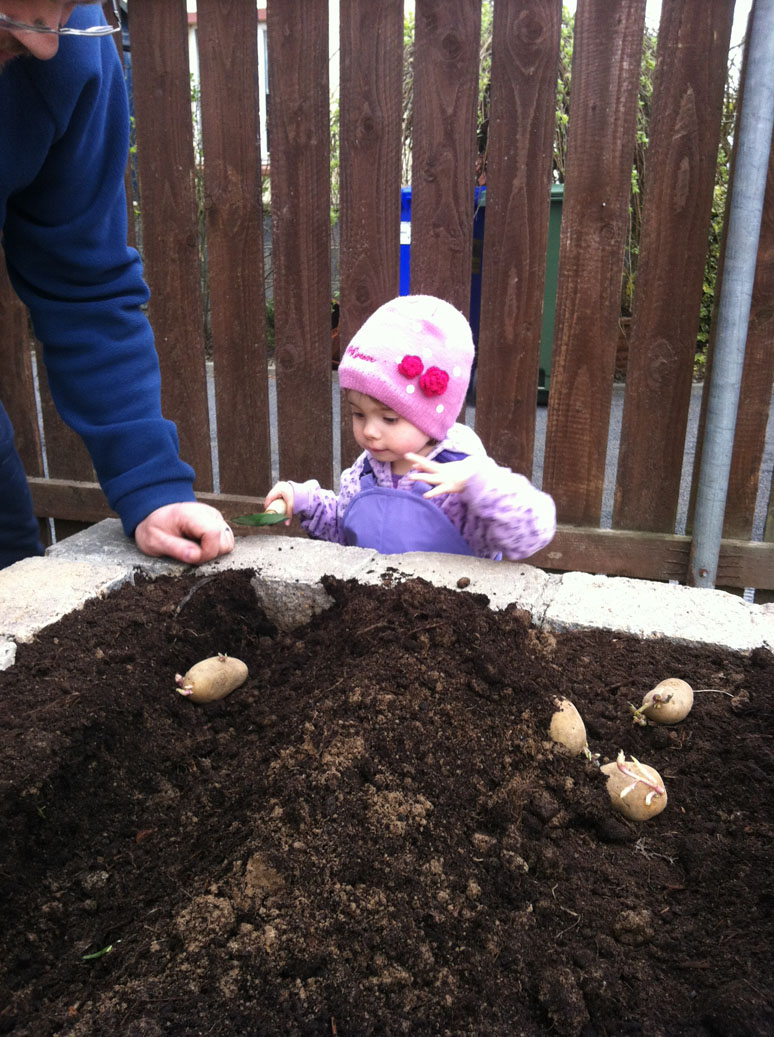
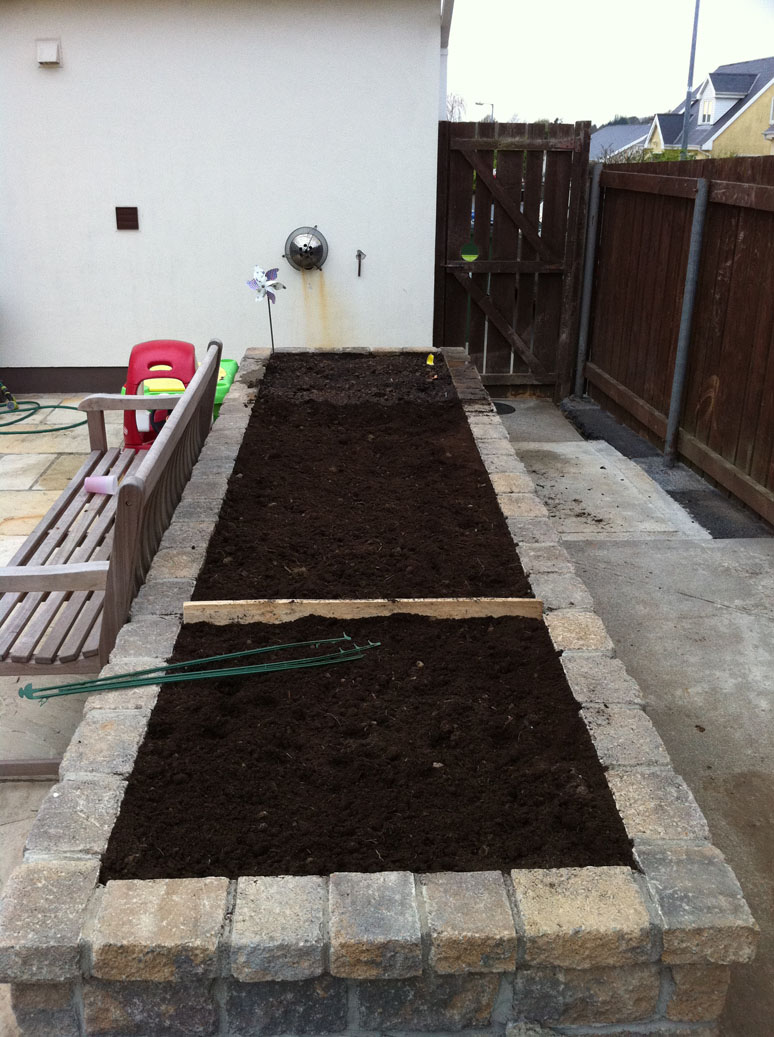
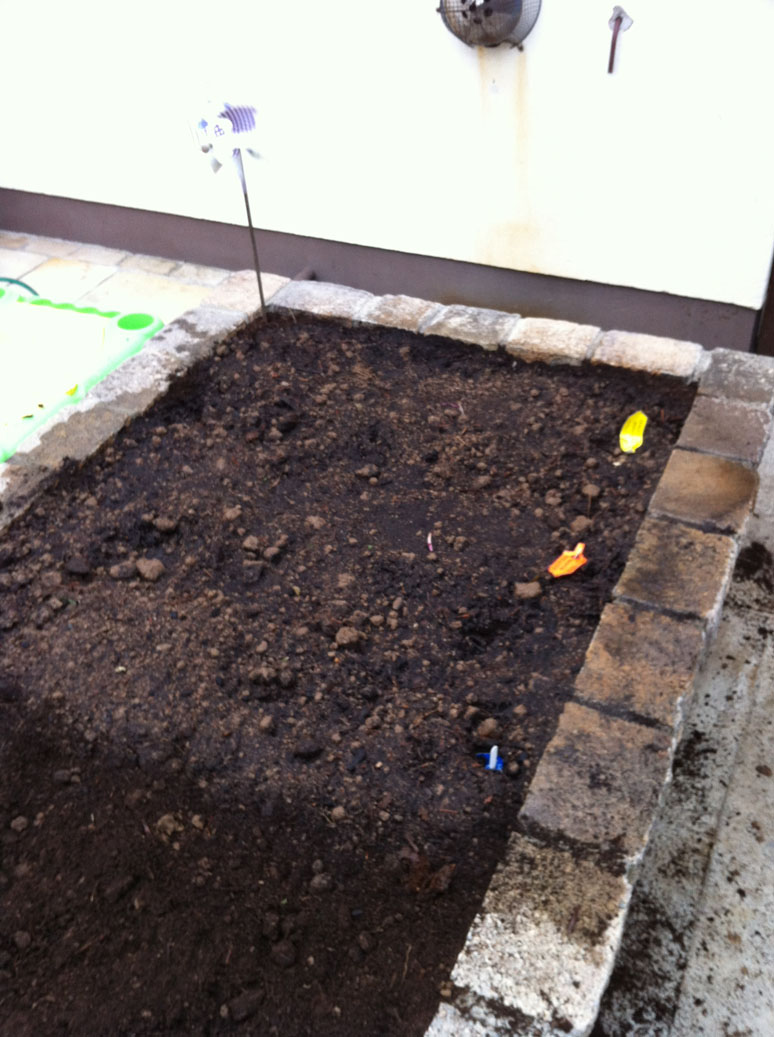
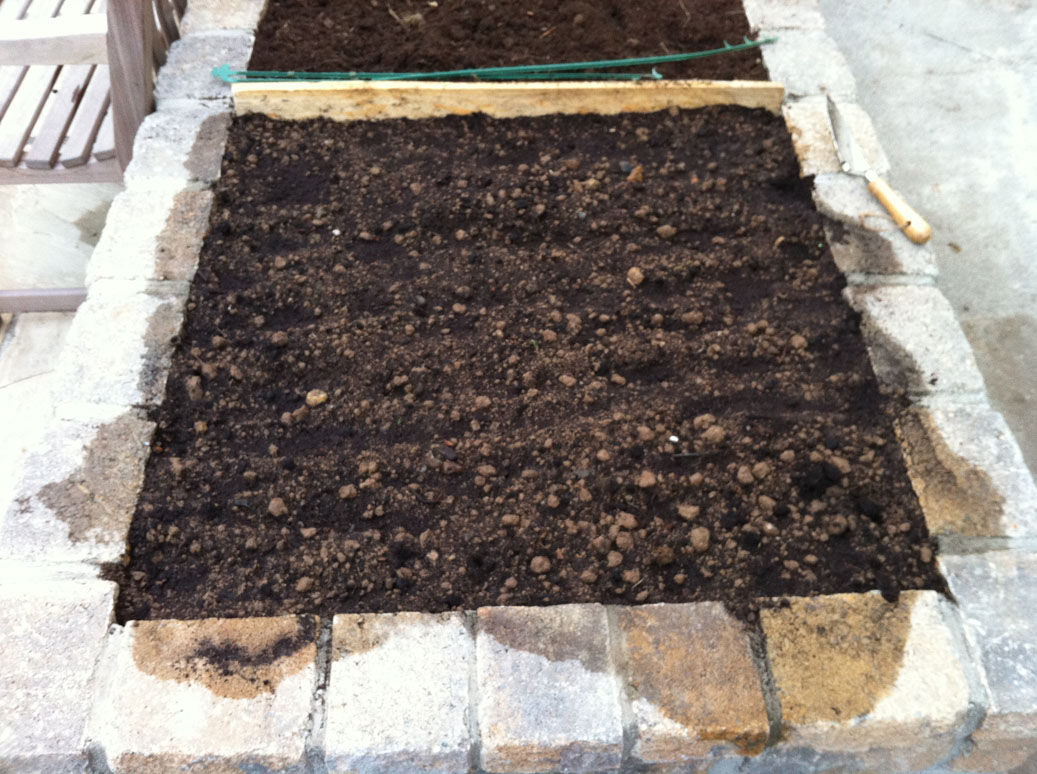
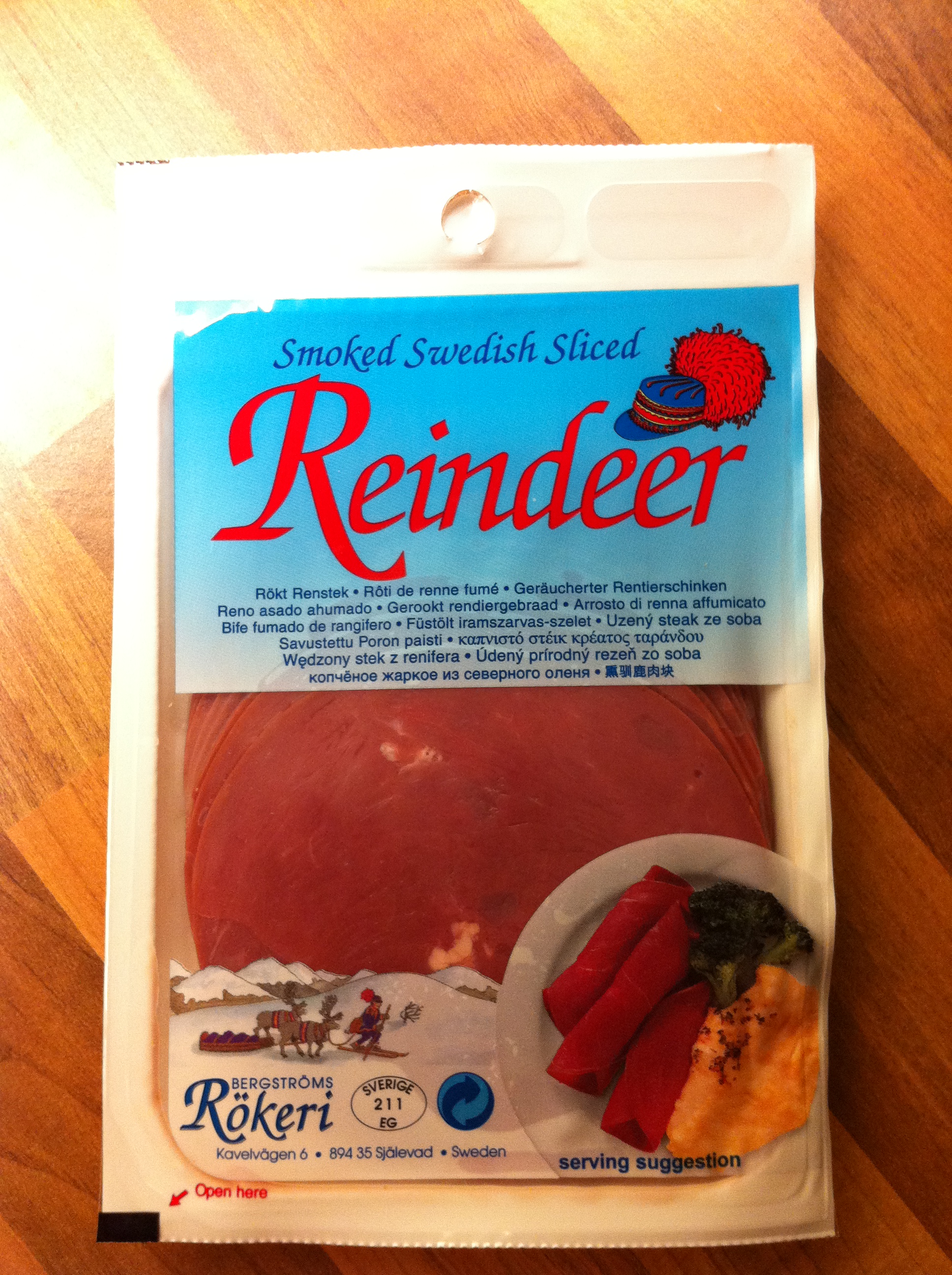
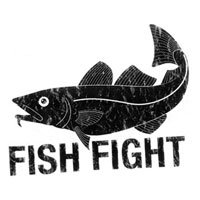
Recent Comments